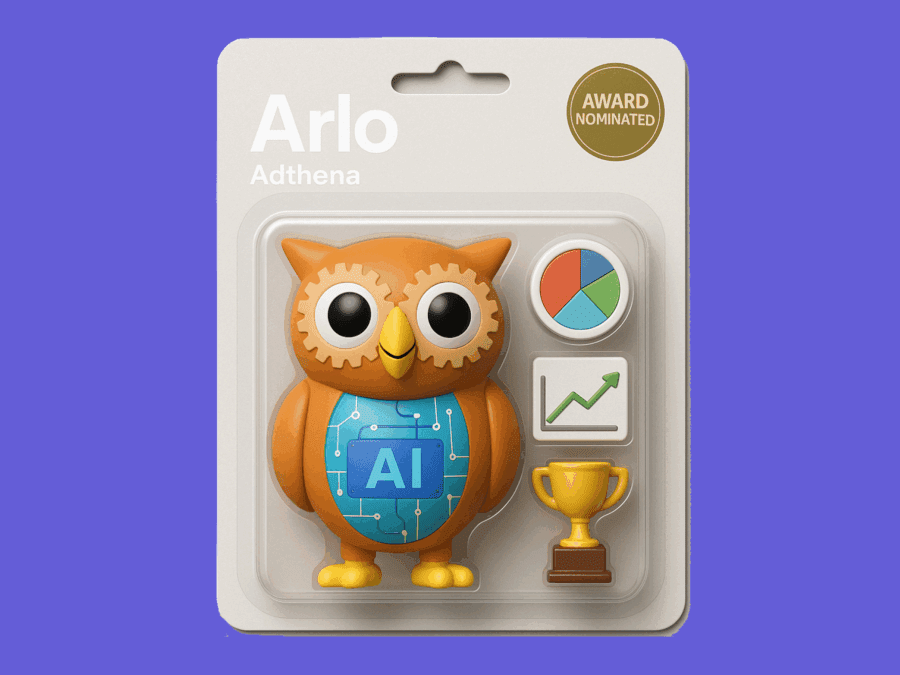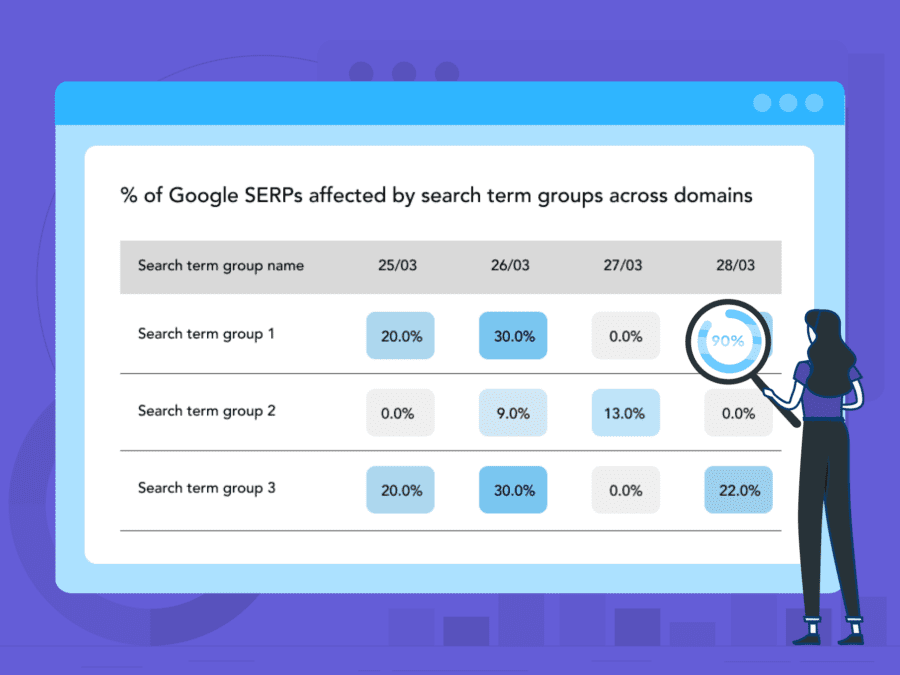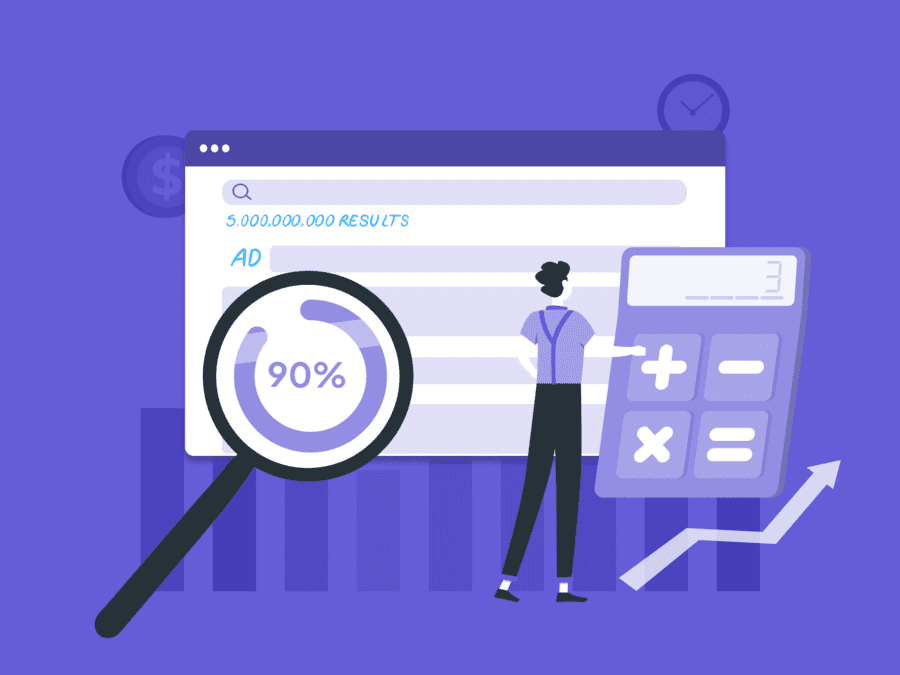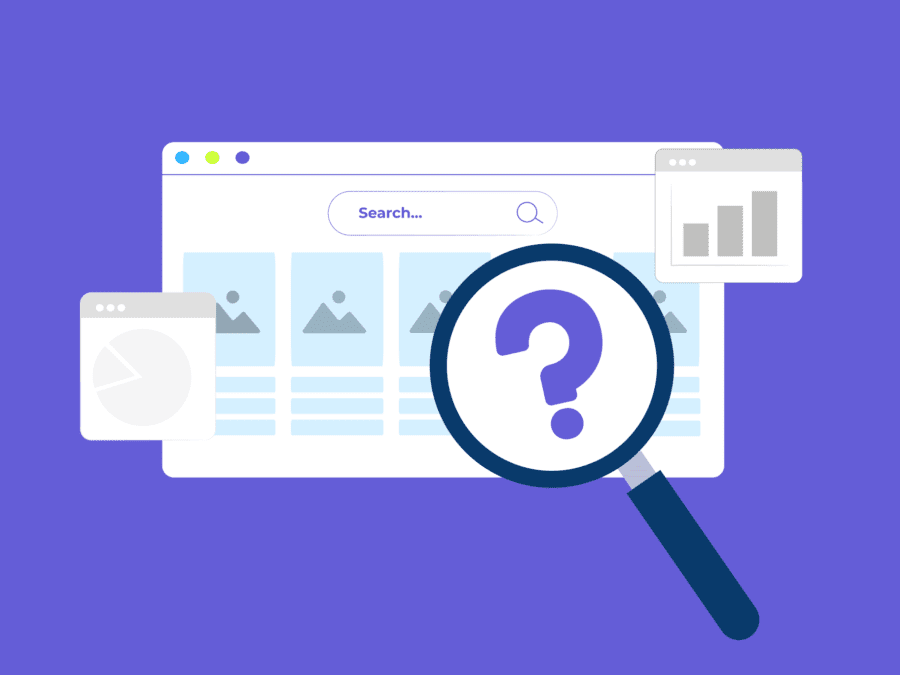When faced with the complex landscape of paid search, it’s easy to feel alone, grappling with the challenges surrounding context on performance, diminishing returns and wasted budgets. The truth is, many advertisers share similar struggles.
In this blog, we shed light on these common Google Ads challenges and introduce groundbreaking solutions offered by Adthena to transform your search strategy.
1) Unknowingly wasting budget
Overspending on brand:
Consider this, you’ve reached the top spot on the Search Engine Results Page (SERP) for both paid and organic search terms, with no other bidder, should you still be paying for that click?
In most cases, the answer is no, you should be getting those clicks for free.
We call these ‘Lone Rangers’ and Adthena’s multi-award winning Brand Activator can identify and pause your spending on them, reducing paid search costs by 20% on average. And now Brand Activator includes close variants in our savings calculation to more accurately reflect the way people search, and more accurately capture savings.
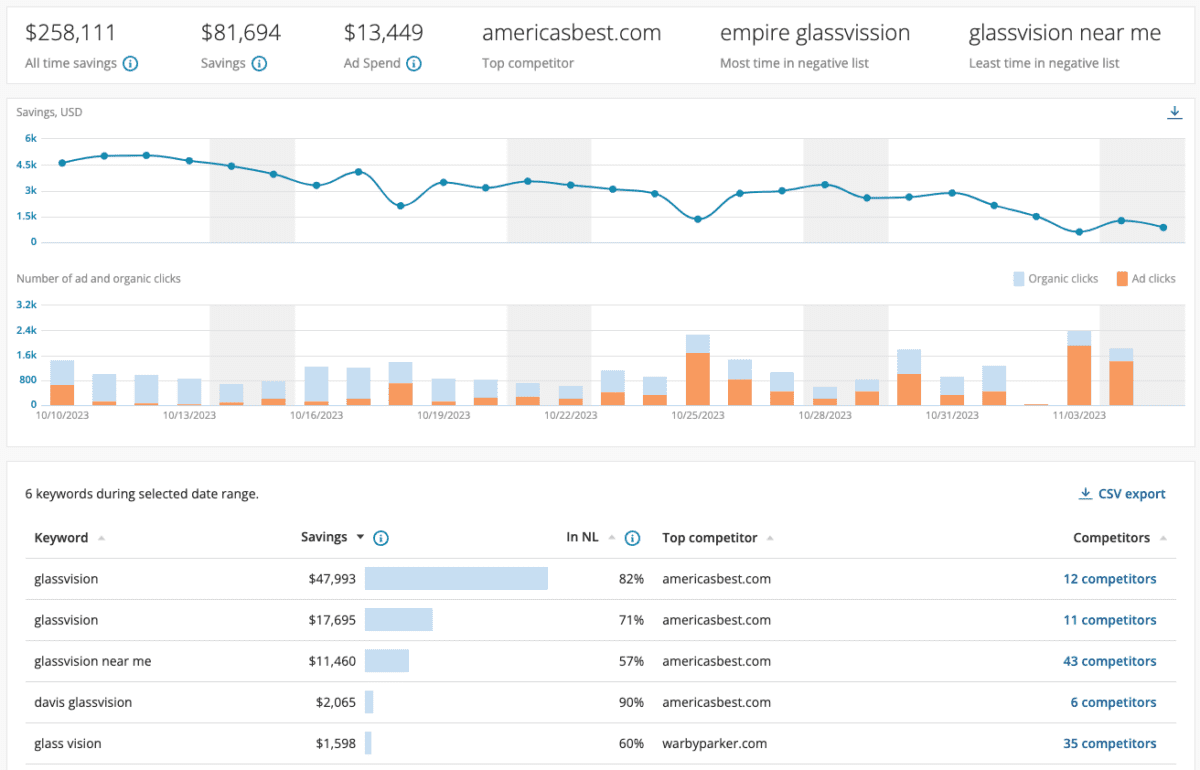
Above: Configure Brand Activator with your specific set of brand terms. These terms will be automatically monitored multiple times an hour for their Lone Ranger status.
With our complimentary brand savings test using Brand Activator, we’ll identify your “Lone Rangers” and highlight the potential savings. Interested to see where you might be able to identify 20% brand budget savings? Find out more and take the test.
Cannibalizing organic traffic:
A lack of visibility into competitor activity leads to misguided decisions on which keywords to test, potentially resulting in lost traffic and inaccurate conclusions about keyword effectiveness.
With Adthena Brand Activator you can identify terms with no competition (Lone Rangers) and add them to your negative keyword list, ensuring your ads are not triggered for irrelevant searches.
What happens when they re-enter the auction you say? You’ll be alerted to this in real-time so that you can adjust your strategy, bidding, or messaging accordingly.

Above: Lone Ranger terms will be paused or restarted by being added or removed from your negative keyword list (NL) in Google Ads.
Competitors infringing on your trademark:
It’s no surprise, partner violations and fraudulent ads can severely damage your trademark, as well as wasting budget and increase unnecessary affiliate commissions. However, tracking partner activity when they’re operating with a low impression share can resort to time-intensive, manual monitoring of the SERP. This lack of insight can make quantifying the impact of partners on costs and traffic, somewhat vague!
There is a solution. Adthena’s Infringement Tracker lets you continually map and monitor all competitive and partner activity around your brand terms, so you can efficiently stop trademark infringements in their tracks.
How does it work? Take a 2 minute self-guided tour.
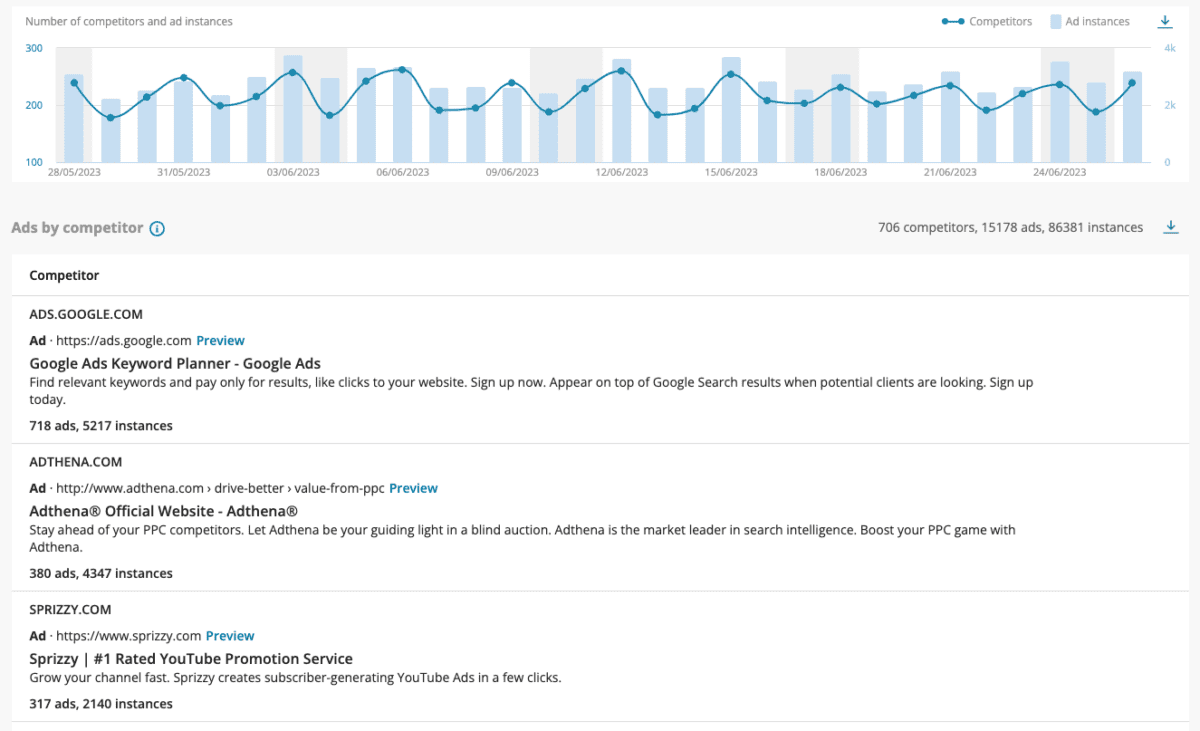
Above: Adthena will track all of your brand infringements by the hour.
Affiliates impersonating your ads:
Have you ever experienced a sudden dip in brand search volume in Google Ads, even though there are no new competitors appearing in the auction insights report? Well, you may have fallen victim to affiliate ad-hijacking!
Ad-hijacking can lead to higher CPCs, loss of control into how your brand is positioned on the SERP, reduced impression share, lower blended ROAS/CPA and an increase in affiliate commission payouts.
The solution to this is simple. Adthena’s Ad-Hijacking Detection monitors and reports thousands of instances of affiliate ad hijacks across hundreds of affiliate networks – so when an affiliate impersonates your ad, you can easily get evidence of the fraud, including ad screenshot and affiliate ID.
Take the self-guided tour to see Ad-Hijacking detection in action.
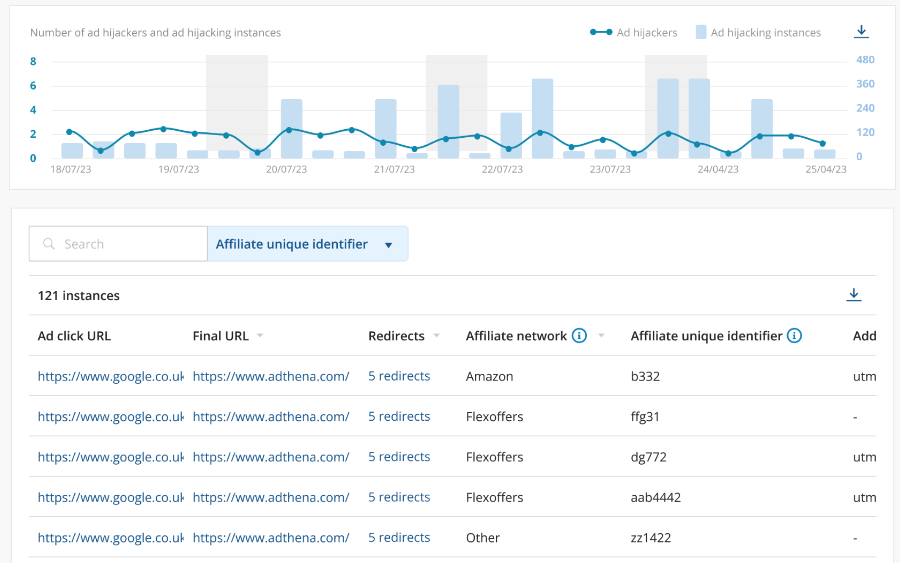
Above: Within the Ad Hijacking dashboard, view a summary of your ad hijacking landscape over a defined time period.
2) Struggling to gain context on performance
When Auction Insights only shows competitors with 10%+ impression share, how do you see everything affecting performance? Without manually monitoring the SERP, the influence of competitor ads on CTR can go unnoticed.
You need full visibility over competitor market share and share of spend, market trends and seasonality, as well as performance metrics contextualizing what’s driving market share for each competitor. Only then can you make informed strategic decisions with a holistic view of performance.
That’s where Adthena’s Market dashboard comes in. Uncover your competitors’ search strategy so you can benchmark your brand, review your market position by category, and identify room for growth.
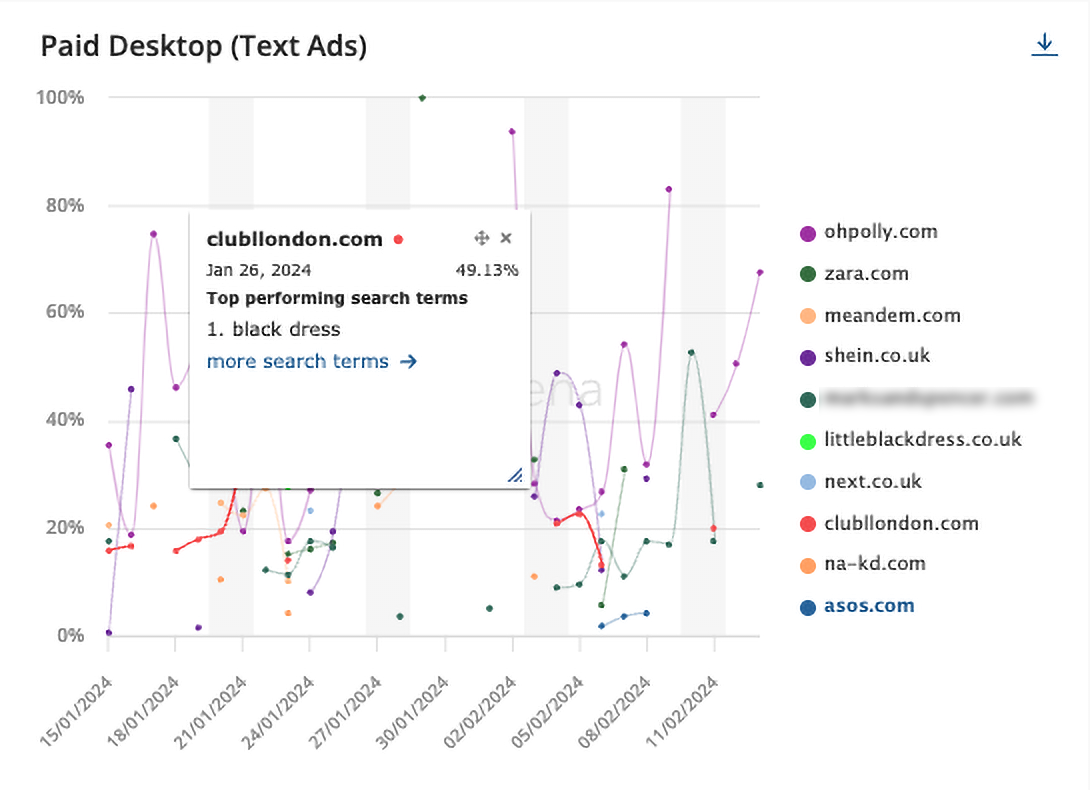
Above: Monitor the trends and seasonality that really matter, including the top 5 search terms for each competitor with Market Trends.
3) Reaching the point of diminishing returns
Failing to react to competitive movements
Google doesn’t always alert you when competitors increase their spend. This can result in your brand being excluded from the auction, a loss of volume or overpayment on traffic. Relatable?
Having timely intel will enable you to react to market movements as they happen, so you can adapt your tactics quickly and stay one-step-ahead of your competitors.
Enter Smart Monitor. Smart Monitor monitors your search term groups and alerts you of key competitor movements so you can continue to hit your volume targets and drive sales at an efficient cost.
Alerts can be set up to notify you when competitor activity shifts across different groups and you’ll gain insight to where competitors are gaining traction – including the campaigns, keywords, or ad formats they are focusing on to expand their market share.

Above: Set up alerts to notify you when competitor activity shifts across different groups
No clear way to correlate ads with impressions
Resonating with your audience is pretty key to your success, but relying on manual Google searches to see what the market is doing, is not a viable tactic. There is no clear way to correlate ads with impressions, making it virtually impossible to evaluate the effectiveness or benefit of specific ad messaging. Not to mention the time you’d waste on these manual tasks when you should be optimizing your performance.
Of course, there is a solution. Adthena’s Top Ads will collect and assimilate all this data for you so you can quickly view ads that have been displayed by yourself and competitors for any given search term. From this, you can gain key insights such as:
- Offers, prices and calls-to-action used by competitors
- Offers or message affecting the average position
- How many ads is each competitor is running
How frequently competitors refresh their ad copy
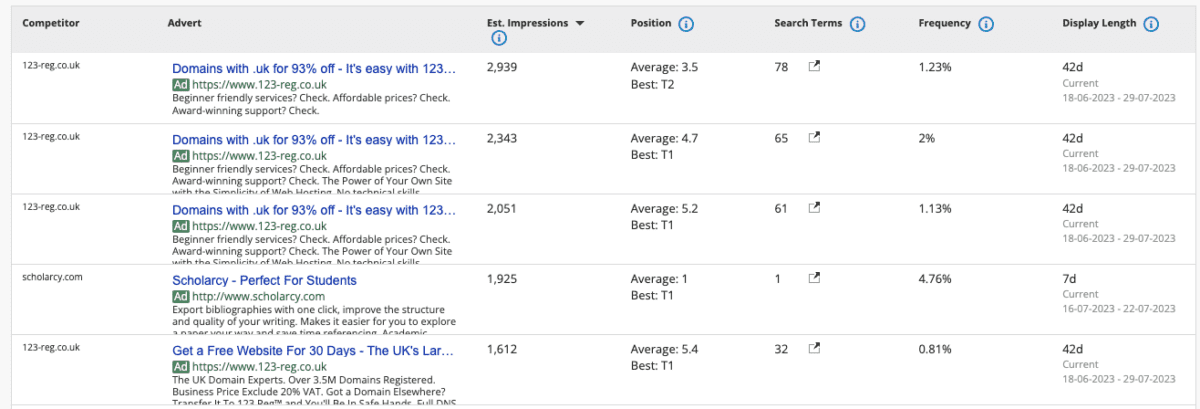
Above: Filter for specific competitors or specific terms – such as % off
Unable to compare Search Query Reports with competitors
You may have the most extensive reach capabilities in place, such as Broad Match or Performance Max campaigns but are you certain that your brand is appearing for everything it should?
When you can’t compare your Search Query Report (SQR) with competitors, it’s tricky to answer that with complete confidence.
This is where Adthena’s Head to Head Comparison comes in, allowing you to observe the total percentage of shared Search Terms for your top competitors, as well as identifying new Search Term Opportunities.
You can quickly visualise the relative size of each competitor and how significantly they overlap.
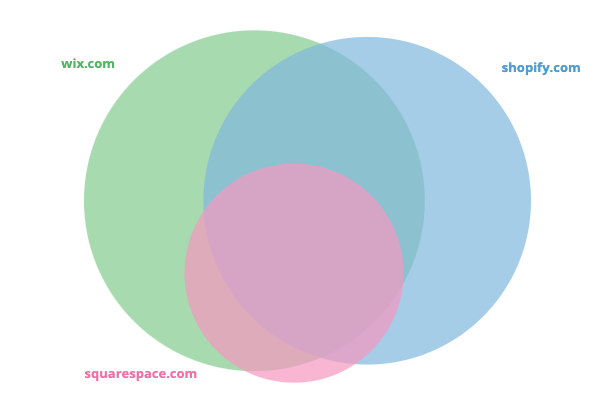
- The larger the circle, the more search terms that competitor appears on.
- Where two circles overlap, two competitors are appear on the same search terms
- Three overlapping circles mean there are terms that all competitors are appearing on.
Can’t correlate PLA, data, images and price points with performance
Do you struggle to effectively identify differences in competitor imagery and understand the impact of variations in product display on performance?
Or perhaps you find it challenging to correlate the impact of different price points with performance on the first page of the SERP?
It’s both, right?
Combined, these common challenges make it difficult to make informed decisions on how to optimize product imagery and pricing strategies. Without comprehensive insights into competitor imagery and the correlation between price points and performance, you may also struggle to identify opportunities for differentiation and enhancement in your marketing efforts.
Adthena’s Google Shopping aggregates Product Listing Ads (PLAs) from online shopping websites, giving you insights into how your competitors are positioning their products in terms of:
- Market coverage, display period and frequency
- Pricing and descriptions
- Product themes
- The number of search terms the PLA appears on
Take a tour of Adthena’s Google Shopping to see how it works.
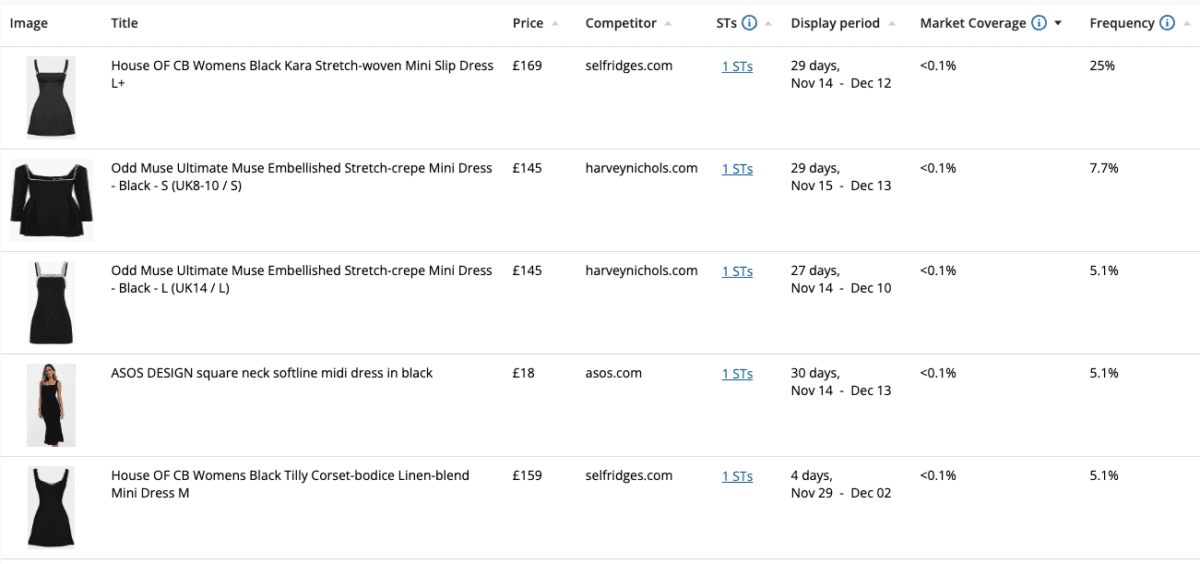
Above: Easily filter by competitor or competitor group, Search Term or Search Term Group, Google Ad campaign or text ads
Make every click count
We all know that navigating the ever-evolving search landscape requires not only resilience but also strategic tools to overcome common Google Ads challenges. Now is the time to bid farewell to the challenges of manual monitoring, vague insights, and inefficient ad spend, and seize the opportunity to enhance your brand’s visibility, optimize performance with Adthena.
Elevate your advertising game, embrace innovation, and make every click count. Take the full self-guided tour of Adthena or book a personalised demo with our team of search specialists.

